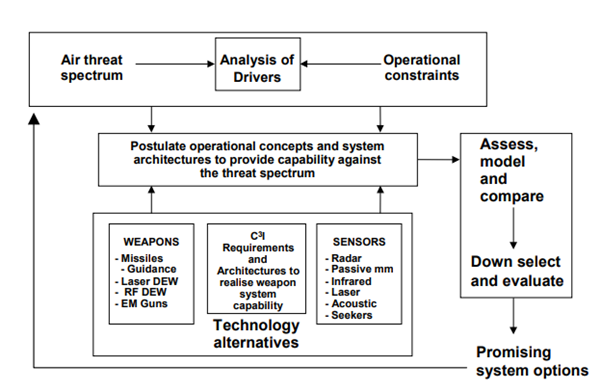Reading Activity
Short range ground-based air defence (GBAD) systems provide an essential defence capability for mobile expeditionary forces and provide the persistence which other air defence elements lack. Today’s forces, however, face not just uncertainty, but capability gaps against the increasingly diverse air threat.
Modern means of air attack (MAA) can penetrate a defended air space and territory and destroy high-value economic and defense installations. The primary MAA countermeasures include anti-aircraft weaponry sets (AAW). AAW form a critical component of any air defense system used to protect strategic discrete and area installations. AAW can be deployed as short-range air defense (SHORAD) and very short-range air defense (VSHORAD) systems around strategic installations.
A VSHORAD system usually features the following components:
- anti-aircraft missile and artillery (AAMA) sets;
- short-range radar unit;
- air defense system control unit, which exchanges data with a superordinate air defense command system.
In the process of planning AAMA set deployment, many highly uncertain factors exist, including the uncertainty of (i) enemy MAA type, (ii) enemy MAA ordinance, (iii) enemy air raid composition, (iv) enemy MAA flight trajectory, (v) enemy MAA tactics, (vi) enemy reconnaissance of the protected area, and much more. It was thus decided to assume simplified models for the VSHORAD and the local radar’s identification zones.
The top-down approach is used to postulate operational concepts and system architectures (Fig. 2-1). The process follows the classic thesis, synthesis, antithesis approach whereby concepts are proposed either top-down or bottom up, synthesised in a system context and then tested in a range of operational scenarios to provide a basis for further concept development.

Fig. 2-1 Overview of conceptual approach
The first stage is to assess the developing threat and the operational conditions, which includes predictions of air threat technology advances and technology counters at the system and sub-system levels. The operational implications of this interaction are extrapolated into an assumed military doctrine relevant to the timeframe, that is developed through a combination of user experience and assessment against the principles of war.